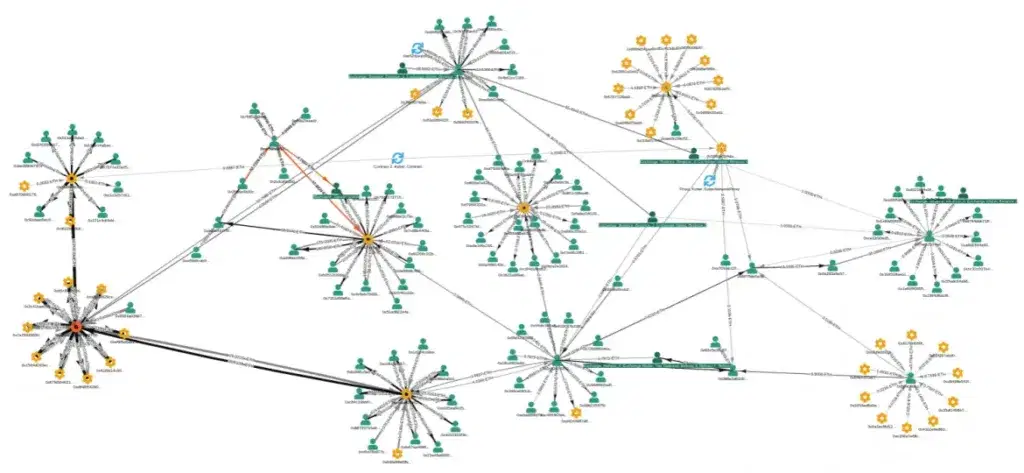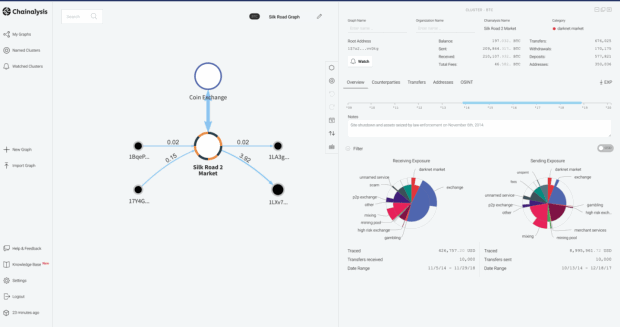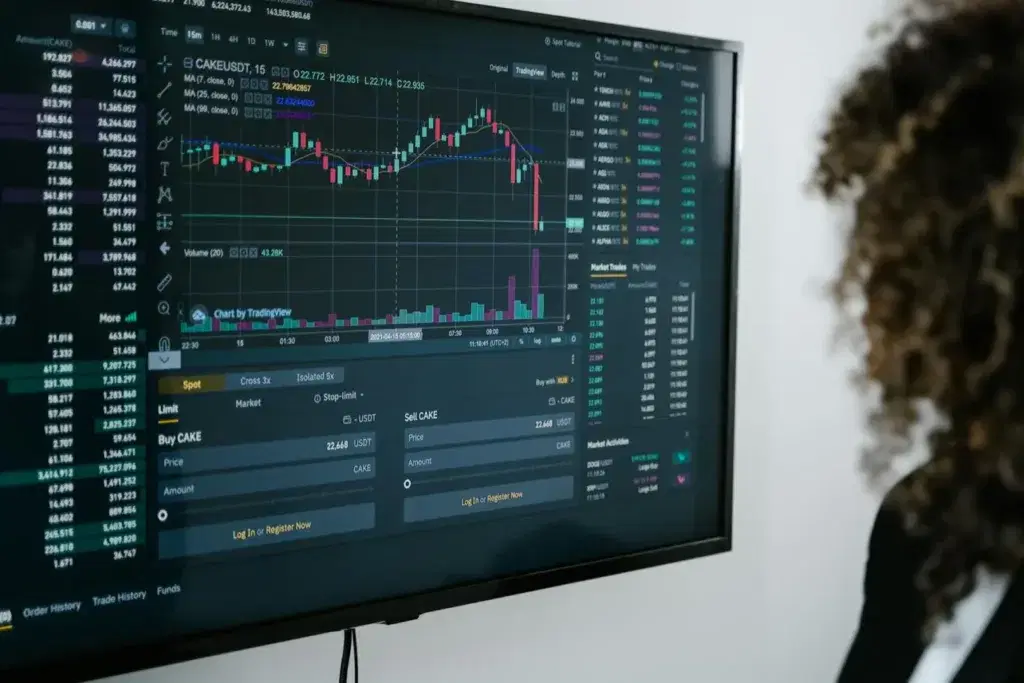In today’s digital economy, catching fraudulent transactions in cryptocurrency is more crucial than ever. With the rise in blockchain technology, blockchain analysis tools have emerged as indispensable resources for identifying and combating fraud. These tools meticulously analyze blockchain data, revealing illicit activities while enhancing transparency and trust in digital transactions. As the demand for digital currencies grows, so does the significance of ensuring secure transaction processes.
Blockchain analysis tools not only assist in tracking suspicious activities but also bolster security, offering peace of mind to businesses and individuals alike. The ability to unearth hidden patterns and connections has made these tools a vital component of modern financial security. For those navigating the cryptocurrency landscape, understanding the capabilities of blockchain analysis tools is essential to staying ahead of potential threats.
Understanding Blockchain Analysis Tools
Blockchain analysis tools are essential in today’s digital economy. They help organizations and individuals navigate the complex world of blockchain. With the rise of cryptocurrencies, the need to understand and analyze blockchain transactions has never been greater. These tools allow users to interpret massive amounts of data on the blockchain, much like a detective following digital clues.


Definition and Purpose
Blockchain analysis tools work like a magnifying glass for blockchain transactions. They enable users to track and scrutinize transaction data on the blockchain. Their purpose is to provide clarity in a digital space that’s often opaque. How do these tools operate? By using complex algorithms and data science techniques, they can:
- Identify Patterns: Recognize and flag suspicious activities through pattern recognition.
- Trace Transactions: Follow the path of a transaction from start to finish.
- Provide Insights: Offer valuable insights into market trends and transaction behaviors.
These tools are crucial in ensuring transparency and security in blockchain systems. They act as the unsung heroes behind the safety of digital transactions.
Related Read: Tether in Legal Battle with Bankrupt Crypto Lender Celsius
Types of Blockchain Analysis Tools
Not all blockchain analysis tools are created equal. They fall into various categories based on their functionalities. Let’s look at some common types:
- Monitoring Tools: These tools keep an eye on transactions in real-time. They alert users about unusual activity, much like a security camera keeping watch over a vault.
- Forensic Tools: Used mainly by law enforcement, these tools dig deep to uncover fraudulent transactions. They help investigate and solve cases of financial misconduct.
- Compliance Tools: Designed to ensure that transactions comply with legal requirements. They help businesses stay in line with regulations, acting like a digital rulebook.
Each type serves a specific function, creating a comprehensive suite for tackling different blockchain challenges. For deeper insights into blockchain analysis, platforms like Chainalysis can provide extensive data services.
Mechanisms of Fraud Detection
The use of Blockchain Analysis Tools has become an essential component in detecting fraudulent transactions. These tools employ various mechanisms that are both innovative and effective in identifying suspicious activities. This section will explore some key techniques used in fraud detection.
Pattern Recognition
Blockchain Analysis Tools rely heavily on pattern recognition to uncover fraudulent activities. By utilizing sophisticated algorithms, these tools can identify specific patterns within the blockchain that are indicative of fraud. Just like detectives searching for clues, these algorithms sift through vast amounts of data to find repeating tendencies that deviate from the norm.
- Identifying Repetitive Behavior: By recognizing behaviors that are frequently linked to fraud, tools can quickly spot potential threats. For example, repeated transactions to newly created wallets might raise a flag.
- Machine Learning Integration: Many tools integrate machine learning, allowing them to learn and improve over time. This continuous learning process ensures that they stay ahead of potential fraudsters.
Anomaly Detection


Anomaly detection is another essential feature used by Blockchain Analysis Tools to identify potentially fraudulent activities. This mechanism focuses on spotting transactions that are unusual or unexpected.
- Unexpected Transaction Behavior: By analyzing the usual transaction patterns, the tools can flag any abnormal behavior. This might include sudden spikes in transaction volume or transfers involving large sums of money.
- Real-time Monitoring: Tools can monitor transactions in real time, allowing them to promptly detect and flag anomalies. This immediate detection helps prevent fraud from progressing unnoticed.
Visit TRM Labs’ platform to understand more about real-time monitoring solutions in blockchain analytics.
Link Analysis
Link analysis is a critical tool in uncovering the relationships between various entities involved in blockchain transactions. It’s similar to connecting dots in a complex web of interactions.
- Mapping Connections: By examining how different addresses and transactions are connected, link analysis can highlight suspicious networks. For instance, it can uncover connections between known fraudsters or detect patterns of money laundering.
- Visualization Tools: Many blockchain analysis platforms use visualization tools to create a clear picture of these links, making it easier for analysts to pinpoint suspicious activities.
By employing these mechanisms, Blockchain Analysis Tools play a vital role in maintaining the integrity of transactions and safeguarding against fraud.
Real-World Applications
Blockchain analysis tools are crucial in today’s digital financial landscape. They help businesses and institutions track and verify transactions to combat fraudulent activities. By understanding how these tools work in different sectors, one can appreciate their significance. Here’s a closer look at how financial institutions, cryptocurrency exchanges, and law enforcement agencies utilize these tools in real-world scenarios.
Financial Institutions
Financial institutions like banks and credit unions use blockchain analysis tools to meet compliance requirements and manage risks. These tools help ensure that transactions adhere to regulations, such as the Anti-Money Laundering (AML) laws. By analyzing transaction patterns, financial institutions can detect unusual activities, reducing the risk of fraud.
- Regulation Adherence: Blockchain tools ensure that every transaction is legitimate and that all required regulations are met.
- Risk Assessment: With detailed transaction analyses, potential threats and fraudulent activities can be identified early.
Cryptocurrency Exchanges
Cryptocurrency exchanges are prone to attacks and unauthorized transactions. Blockchain analysis tools provide security against such threats by monitoring activities and recognizing suspicious behavior before it becomes a bigger problem. This is especially vital given the high stakes involved in cryptocurrency trading.
- Security Monitoring: Exchanges use these tools to continuously track and analyze transaction data, keeping an eye out for potential security breaches.
- Fraud Detection: Identifies and isolates malicious activities that could disrupt exchange operations.
If you wish to learn more about the importance of these tools in cryptocurrency exchanges, visit Chainalysis: The Blockchain Data Platform.
Law Enforcement
Law enforcement agencies rely on blockchain analysis tools to investigate crimes involving cryptocurrencies. These tools provide a trail of transactions that can be key evidence in criminal cases. They are vital for tracking illegal activities like money laundering and fraud.
- Investigation Support: Offers a clear view of transaction histories connected to criminal activities.
- Evidence Gathering: Assists in assembling evidence by providing detailed transaction data.
These tools are invaluable for law enforcement agencies working on complex cases.
Blockchain analysis tools are not just a technological innovation—they are indispensable in modern finance, trading, and law enforcement, acting like a magnifying glass on the complex and often opaque world of blockchain transactions.
Challenges in Blockchain Analysis
Blockchain analysis tools are becoming increasingly vital in detecting fraudulent transactions. However, as much as these tools offer promising solutions, they also face significant hurdles. What are the main challenges in the analysis of blockchain technology? Here, we explore two major issues: data privacy and the evolving techniques of fraudsters.


Photo by Tima Miroshnichenko
Data Privacy Issues
Data privacy is a major concern when it comes to blockchain analysis. Blockchain’s open and transparent nature is its greatest strength but also its biggest weakness. Transparency ensures that data on the blockchain can be accessed by anyone. But this openness leads to concerns over user privacy and data protection. Personal details, financial transactions, and even sensitive information might be exposed, making privacy a topic of debate and concern.
- Public Ledger: Since blockchain acts as a public ledger, it exposes transaction data to anyone who wants to see it, leading to potential misuse.
- Immutable Records: Once a transaction is recorded, it cannot be altered or deleted, which might pose a challenge when sensitive data is involved.
- Regulatory Challenges: Various regulations, such as GDPR, emphasize the protection of user data, challenging blockchain’s transparency.
Evolving Fraud Techniques
The adaptability of fraudsters is akin to a cat-and-mouse game. As analysis tools become more sophisticated, fraudsters find new ways to circumvent them. This constant evolution necessitates continuous advancements in blockchain analysis tools to keep up.
- New Anonymization Methods: Fraudsters develop new methods to anonymize transactions, making it difficult for tools to trace illegal activities.
- Complex Attack Vectors: Attack vectors are becoming more complex, requiring analysis tools to constantly update their strategies.
- Cross-Chain Transactions: The use of multiple blockchains simultaneously can hinder investigators and make fraudulent transactions even harder to track.
Together, these challenges illustrate the complex landscape of blockchain analysis. Addressing them is crucial for the advancement and effectiveness of blockchain analysis tools.
Conclusion
Blockchain analysis tools have become a vital asset in detecting and preventing fraudulent transactions. They empower financial systems by analyzing transaction histories and identifying suspicious activities with precision. The ability to screen public transaction data and uncover relationships between entities enhances transparency and trust in digital payments.
As these tools continue to develop, they serve as a key defense against financial fraud and ensure transaction integrity. Readers are encouraged to stay informed about the evolving capabilities of blockchain analysis and consider integrating these tools to safeguard their transactions.
With the constant advancements in technology, the fight against fraud is far from over, and blockchain analysis tools are leading the charge.

![How Blockchain Analysis Tools Catch Fraudulent Transactions [2024 Update]](https://investorempires.com/wp-content/uploads/2024/08/Spotting-Crypto-Frauds-In-2024.jpg)
Comments are closed, but trackbacks and pingbacks are open.